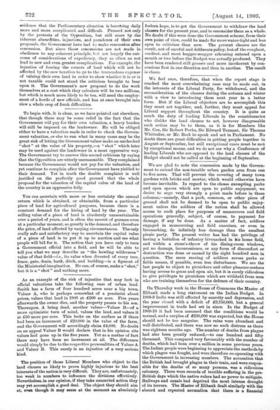As an example of the risk of injustice that may
lurk in official valuations take the following case of urban land. Smith has a farm of four hundred acres near a big town. Valuer A, who is perhaps somewhat of a pessimist about prices, values that land in 1908 at 2200 an acre. Five years afterwards the owner dies, and the property passes to his son. Thereupon, A being dead, another valuer—Valuer B—of a more optimistic turn of mind, values the land, and values it at 250 more per acre. This looks on the surface as if there had been an increment of 220,000 in the value of the farm, and the Government will accordingly claim 24,000. No doubt on an appeal Valuer B would declare that in his opinion site values had gone up in the five years. Yet as a matter of feet there may have been no increment at all. The difference would simply be due to the respective personalities of Valuer A and Valuer B. This surely is an injustice of a very serious kind.






































 Previous page
Previous page